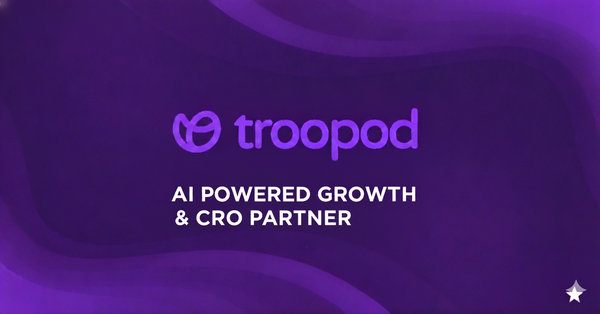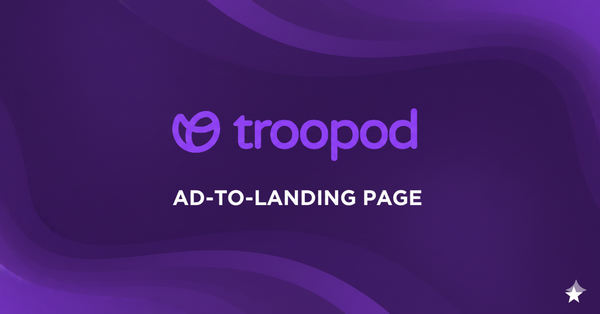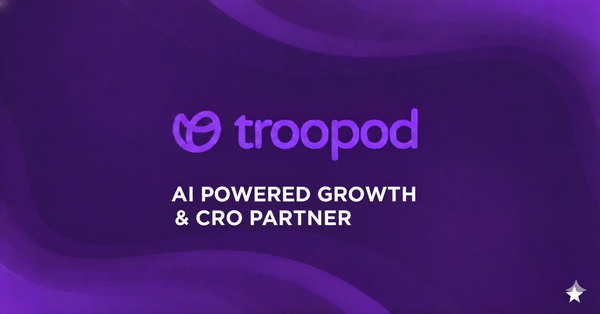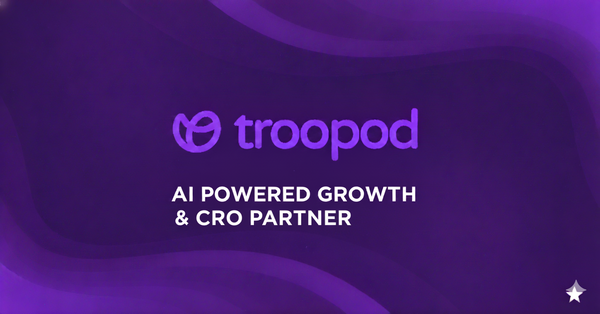Beyond "Hello [Name]": How Real-Time AI Personalization is Revolutionizing Customer Experience and Driving 300% ROI in 2025
![Beyond "Hello [Name]": How Real-Time AI Personalization is Revolutionizing Customer Experience and Driving 300% ROI in 2025](/content/images/size/w1200/2025/10/AI-PERSONALIZATION-2.png)
Imagine landing on a website that instantly knows you're a returning customer interested in sustainable products, adjusts pricing based on your purchase history, and displays content that perfectly matches your browsing behavior—all within 50 milliseconds of your arrival. This isn't science fiction. It's the new reality of real-time website personalization, and it's transforming how businesses connect with customers in 2025.
The era of generic "Hello [Name]" personalization is over. Today's most successful companies are deploying AI-driven experiences that adapt in real-time, analyzing hundreds of behavioral signals to create hyper-relevant experiences that feel almost telepathic in their precision.
The results speak for themselves: companies implementing advanced real-time personalization are seeing conversion rate increases of 50% or more, with some achieving 300% ROI improvements. But perhaps more telling is this statistic—76% of users now feel genuinely frustrated when websites fail to personalize their experience, and 71% expect personalization across every single touchpoint.
The message is clear: real-time personalization isn't just a competitive advantage anymore. It's the baseline expectation for digital experiences in 2025.
The Personalization Evolution: From Batch to Brilliant
The Death of Static Personalization
Traditional website personalization was built on a foundation of assumptions and delays. Marketing teams would segment users into broad categories, create static rule sets, and hope their month-old data still reflected customer intent. This batch processing approach meant users saw content based on who they were last week, not who they are right now.
The fundamental problem? Human behavior and intent change constantly. A customer researching budget laptops on Monday might be ready to purchase a premium model by Friday. Static personalization systems completely miss these micro-moments of shifting intent.
The Rise of Streaming Intelligence
Modern real-time personalization represents a complete paradigm shift from batch processing to streaming intelligence. Instead of relying on historical data and rigid rules, these systems:
- Process behavioral signals in milliseconds, not hours or days
- Adapt content dynamically based on current session behavior
- Predict intent changes before users even realize them
- Orchestrate experiences across devices and channels simultaneously
This evolution is powered by three critical technology enablers:
Edge Computing: AI models deployed at the network edge deliver personalization decisions in under 100 milliseconds, creating instantaneous responses to user behavior.
Real-Time Data Streaming: Continuous ingestion and processing of behavioral signals means user profiles update constantly, reflecting the most current intent and preferences.
Deployed AI Models: Machine learning algorithms running in production environments analyze hundreds of variables simultaneously, making personalization decisions that would be impossible for human teams to execute manually.
The Architecture of Instant Relevance
Component 1: Real-Time Data Streaming Infrastructure
The foundation of effective personalization is a robust data streaming infrastructure that captures and processes behavioral signals in real-time.
Event Streaming Platforms continuously ingest data from every user interaction—clicks, scrolls, time spent on sections, mouse movements, and even micro-hesitations that indicate uncertainty or interest.
Real-Time Customer Data Platforms (CDPs) aggregate these signals with historical data, creating comprehensive user profiles that update with each interaction. Unlike traditional CDPs that batch process data overnight, real-time systems maintain living profiles that evolve throughout each session.
Behavioral Signal Processors use natural language processing and computer vision to understand content preferences, analyze product interests, and detect emotional states from user interactions.
Cross-Device Identity Resolution connects user behavior across smartphones, tablets, and desktop computers, creating unified profiles that enable seamless personalization regardless of how customers access your site.
Component 2: AI-Powered Decision Engines
The brain of real-time personalization lies in AI decision engines that process complex behavioral data and make instant personalization choices.
Predictive Intent Scoring analyzes micro-signals to predict what users want before they explicitly express it. These systems can detect the difference between casual browsing and high-intent shopping behavior, adjusting experiences accordingly.
Dynamic Content Recommendations go far beyond "customers who bought this also bought that" to consider real-time context, current trends, inventory levels, and individual behavioral patterns.
Real-Time Pricing Optimization adjusts pricing and promotional offers based on user segments, purchase probability, competitive positioning, and inventory management needs.
Intelligent A/B Testing and Traffic Allocation automatically routes users to the highest-converting experiences while continuously testing new variations to improve performance over time.
Component 3: Dynamic Content Delivery Networks
Delivering personalized content instantly across global audiences requires sophisticated CDN infrastructure designed specifically for dynamic experiences.
Edge Computing Capabilities place AI decision-making closer to users, reducing latency and enabling sub-100ms personalization response times regardless of geographic location.
Personalized Caching Strategies balance the speed benefits of cached content with the freshness requirements of personalized experiences, using intelligent cache invalidation and content layering.
Geo-Specific Content Optimization adapts not just language and currency, but cultural references, product selections, and messaging strategies based on regional preferences and market conditions.
Mobile-First Delivery Optimization recognizes that mobile users have different intent patterns and attention spans, delivering streamlined, thumb-friendly personalized experiences optimized for smaller screens and touch interactions.
The 5 Levels of Personalization Maturity: Where Does Your Business Stand?
Understanding where your organization currently stands on the personalization maturity curve is crucial for planning your evolution toward real-time, AI-driven experiences.
Level 1: Basic Segmentation - The Starting Point
Characteristics: Rule-based content delivery using broad demographic segments, basic A/B testing, batch data processing that updates nightly or weekly.
Technology: Simple content management systems, basic analytics platforms, manual campaign management.
Business Impact: 5-10% conversion rate improvements through basic targeting and message customization.
Example: An e-commerce site shows different homepage banners to "men" and "women" based on account registration data.
Level 2: Dynamic Content Adaptation - Real-Time Responsiveness
Characteristics: Real-time element swapping based on current session behavior, behavioral trigger messaging, cross-session personalization that remembers user preferences.
Technology: Tag management systems, behavioral analytics platforms, dynamic content optimization tools.
Business Impact: 10-20% conversion rate improvements through behaviorally relevant content and messaging.
Example: A SaaS website changes its call-to-action from "Start Free Trial" to "Schedule Demo" when it detects enterprise-level browsing behavior.
Level 3: Predictive Personalization - Anticipating Intent
Characteristics: Intent prediction from micro-behavioral signals, proactive product recommendations, consistent experiences across multiple channels and touchpoints.
Technology: Machine learning platforms, predictive analytics engines, cross-channel orchestration systems.
Business Impact: 20-35% conversion rate improvements through anticipatory experiences that feel almost intuitive.
Example: A travel site detects that a user is likely planning a business trip (based on browsing patterns, time of day, and device type) and automatically surfaces business-friendly hotels with meeting facilities.
Level 4: Omnichannel Orchestration - Unified Intelligence
Characteristics: Seamless personalization across all devices and channels, real-time inventory integration affecting recommendations, unified customer journey optimization from awareness to retention.
Technology: Advanced customer data platforms, omnichannel orchestration engines, real-time inventory management systems.
Business Impact: 35-50% higher customer lifetime value through consistent, intelligent experiences that build lasting relationships.
Example: A retail brand recognizes when a customer views a product on mobile during lunch break, then sends a personalized email with that product plus complementary items when they're likely to be on their desktop computer at home.
Level 5: Autonomous Optimization - Self-Improving Intelligence
Characteristics: AI systems that continuously optimize without human intervention, automated experiment design and implementation, models that retrain themselves based on performance data.
Technology: Advanced machine learning operations (MLOps), automated experimentation platforms, self-optimizing AI systems.
Business Impact: 50%+ conversion rate improvements and 300% ROI increases through continuously evolving, self-improving personalization systems.
Example: An AI system automatically detects that users from a specific geographic region have started showing different preference patterns, creates new personalization rules, tests them automatically, and implements the winning variations—all without human intervention.
Privacy-First Personalization: Balancing Intelligence with Trust
The New Privacy Paradigm
The most sophisticated personalization means nothing if customers don't trust you with their data. In 2025, privacy-first design isn't just about regulatory compliance—it's about building the foundation of trust that enables deeper personalization relationships.
Explicit Consent Architecture goes beyond basic cookie banners to create value exchanges where customers actively choose to share data in return for better experiences. The most successful companies frame data collection as a partnership rather than a requirement.
Explainable AI Decisions provide transparency into how personalization works. When users understand why they're seeing specific content or offers, they're more likely to engage and more willing to share additional data.
Data Minimization Principles focus on collecting only the data necessary for meaningful personalization, reducing privacy risk while maintaining experience quality.
User Control Integration gives customers granular control over their personalization preferences, allowing them to adjust the intensity and focus areas of their personalized experiences.
Regulatory Compliance in a Real-Time World
GDPR Compliance for Real-Time Systems requires careful architecture planning to ensure that lightning-fast personalization decisions still respect user rights and data protection requirements.
- Legal Basis Mapping: Every personalization use case must have a clear legal basis, whether legitimate interest, consent, or contract fulfillment
- Privacy Impact Assessments: Real-time systems processing large volumes of personal data require thorough PIAs to identify and mitigate risks
- Privacy by Design: Building privacy protections into the fundamental architecture rather than adding them as afterthoughts
- User Rights Automation: Systems must support automated responses to access, portability, and erasure requests without disrupting personalization services
CCPA/CPRA Considerations for California consumers include:
- Frictionless Opt-Out Mechanisms: One-click opt-out from personalized experiences without degrading basic site functionality
- Transparent Usage Notices: Clear explanations of how personalization data is collected, used, and shared
- Third-Party Data Limitations: Restrictions on sharing personalization insights with advertising partners or data brokers
- Global Privacy Control Support: Automatic recognition and respect for browser-based privacy preferences
Technical Privacy Safeguards
Differential Privacy adds mathematical noise to data sets, protecting individual privacy while maintaining the statistical validity needed for effective personalization models.
Federated Learning trains personalization models across user devices without centralizing sensitive data, enabling AI improvements while keeping personal information distributed.
On-Device Processing performs personalization computations locally on user devices, reducing data transmission and storage requirements while improving response times.
Encrypted Computation allows personalization algorithms to process encrypted data, maintaining privacy even during active personalization decision-making.
Measuring Success: The ROI Framework for Real-Time Personalization
Revenue Impact Metrics
Revenue Per Visitor (RPV) provides the clearest indication of personalization success, measuring how much additional revenue personalized experiences generate compared to generic alternatives.
Average Order Value (AOV) Improvements track how personalized product recommendations, dynamic pricing, and contextual upselling influence purchase behavior.
Customer Lifetime Value (CLV) Enhancement measures the long-term impact of personalized experiences on customer relationships, retention rates, and repeat purchase behavior.
Conversion Rate Optimization Across Journeys analyzes how personalization affects different stages of the customer journey, from initial awareness through post-purchase engagement.
Personalization-Specific KPIs
Content Relevance Scoring uses user feedback, engagement metrics, and conversion data to measure how well personalized content matches user interests and needs.
Session Depth and Engagement Metrics track how personalization affects user behavior within individual sessions, measuring time spent, pages viewed, and interaction quality.
Cross-Sell and Upsell Success Rates monitor how effectively personalized recommendations drive additional purchases and higher-value product selections.
Personalization Coverage Percentage measures what portion of your audience receives personalized experiences, identifying opportunities to expand coverage and improve systems.
Technical Performance Indicators
Decision Latency Monitoring tracks how quickly personalization systems make decisions, with best-in-class systems consistently delivering responses in under 100 milliseconds.
System Uptime and Reliability ensures that personalization systems maintain consistent availability, as downtime directly impacts customer experience and revenue.
Data Quality and Model Accuracy monitors the precision of personalization algorithms, tracking prediction accuracy and content relevance over time.
Integration Stability measures how well personalization systems work with other marketing technology, e-commerce platforms, and customer service tools.
Privacy and Trust Metrics
Consent Opt-In Rates indicate how effectively your privacy-first approach builds trust and encourages data sharing for better personalization.
User Satisfaction Scores measure customer perception of personalized experiences, tracking whether users find personalization helpful or intrusive.
Privacy Complaints and Opt-Out Rates provide early warning indicators of privacy concerns that could impact long-term personalization success.
Brand Trust in Personalization surveys and studies that measure customer confidence in your data handling and personalization practices.
Implementation Roadmap: Your Path to Personalization Excellence
Phase 1: Foundation Building (Months 1-3)
Data Infrastructure Assessment: Audit your current data collection, storage, and processing capabilities. Identify gaps between your existing systems and real-time personalization requirements.
Privacy Framework Implementation: Establish consent management systems, privacy policy updates, and compliance monitoring before beginning advanced data collection.
Basic Real-Time Capabilities: Implement fundamental real-time personalization features like dynamic content swapping and behavioral trigger messaging.
Team Training and Change Management: Educate marketing, technical, and customer service teams about personalization capabilities, privacy requirements, and new workflows.
Phase 2: Intelligence Integration (Months 4-8)
AI Model Development: Build or integrate machine learning models for intent prediction, content recommendation, and dynamic optimization.
Cross-Channel Data Connection: Connect personalization systems across website, email, mobile app, and advertising channels for unified customer profiles.
Advanced Testing Implementation: Deploy sophisticated A/B testing and multivariate optimization capabilities that work with personalization systems.
Performance Monitoring: Establish comprehensive tracking and reporting systems to measure personalization impact and identify optimization opportunities.
Phase 3: Scale and Optimization (Months 9-12)
Omnichannel Orchestration: Achieve seamless personalization across all customer touchpoints, ensuring consistent and complementary experiences.
Autonomous Optimization Features: Implement self-improving systems that automatically test, learn, and optimize personalization approaches.
Advanced Privacy Features: Deploy cutting-edge privacy technologies like differential privacy and federated learning for enhanced data protection.
ROI Maximization: Focus on the highest-impact personalization opportunities, optimizing for customer lifetime value and business growth.
The Future of Customer Experience is Personal
Real-time website personalization represents more than just a marketing technology upgrade—it's a fundamental shift toward customer-centric business models that prioritize individual needs and preferences over mass-market approaches.
The companies that master real-time personalization in 2025 won't just see better conversion rates and higher revenue. They'll build deeper customer relationships, stronger brand loyalty, and sustainable competitive advantages that compound over time.
The technology exists. The customer expectations are clear. The business case is proven.
The only remaining question is whether your organization will lead this personalization revolution or watch competitors create the intimate, relevant experiences that your customers increasingly demand.
The future of customer experience is personal, intelligent, and instantaneous. The time to build that future is now.
Ready to transform your customer experience with real-time personalization? Start with a comprehensive audit of your current capabilities and build your roadmap toward Level 5 personalization maturity. Your customers—and your revenue—will thank you.





